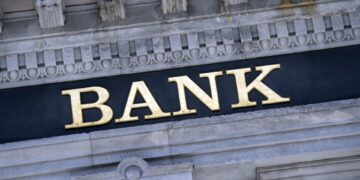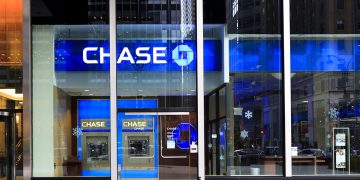Text size

Ting Shen/Bloomberg
Banks like
Wells Fargo
and
Bank of America
have taken advantage of historically low interest rates to issue a spate of preferred stock this year at dividend yields of around 4%.
Wells Fargo (ticker: WFC) recently sold $3.5 billion of preferred at $1,000 a share geared toward institutional investors at a yield of 3.9%, and just over $1 billion of retail-oriented preferred at 4.375% (WFC pr C) at $25 a share. Bank of America (BAC) sold $915 million of 4.125% preferred (BAC pr P) at $25 a share.
Other issuers in the past two weeks include
U.S. Bancorp
(USB),
First Republic Bank
(FRC), and
Huntington Bancshares
(HBAN).
The $300 billion preferred market ended 2020 on a strong note after getting hit in the pandemic aftermath last March. It has pulled back somewhat in 2021 as interest rates on Treasury securities have risen, with the 10-year Treasury note now yielding 1.15%.
The preferred sector returned negative 1.75% in January, according to UBS’s monthly fixed-income strategy report. Preferred securities usually are perpetual, meaning no maturity date, which can make them acutely sensitive to changes in long-term rates. Heavy supply and “mediocre” interest from retail investors have weighed on the market, UBS noted.
The leading preferred exchange-traded fund,
iShares Preferred & Income Securities
ETF (PFF) was trading at $38.16, up 6 cents Monday, but off about 1% so far in 2021.
Preferred stock has long been popular with retail investors because of relatively high yields and liquidity. Most preferred trades like common stock on the New York Stock Exchange, a contrast with the opaque over-the-counter markets in corporate and municipal bonds. Preferred yields have come down from about 5% last spring. Banks and other financial companies dominate the market.
In its February monthly report, UBS upgraded the preferred sector to Most Preferred from Neutral.
Its analysts, including preferred specialist Frank Sileo, wrote: “Current yields spreads are near historical averages which should provide capacity to absorb potentially higher interest rates. And in the current market context, these may represent higher relative risk premiums than other sectors.”
Preferred yields now average a historically low 3.5% but spreads are near average levels at around 2.5 percentage points.
The recently issued bank preferreds are trading near offering prices. The Wells Fargo 4.375% series C issue trades around $24.75, and the Bank of America 4.125% series P, near $25.
U.S. Bancorp sold $750 million of 4% preferred at $25 (USB pr R), and it trades slightly below $25. First Republic issued nearly $750 million of 4.25% preferred at $25 (FRCLP). That issue trades around $25. The Huntington Bancshares 4.5% preferred (HBANL) trades right around its face value of $25.
Barron’s wasn’t enthusiastic about preferred in our year-end income outlook for 2021, citing low yields and risk of higher rates. Most preferred can be redeemed in five years at face value, creating an unfavorable risk/reward for investors because upside is capped while downside can be significant.
Most preferred—with rates of 4.75% to 6%—trades at premium to face value and often carries yield of around 3% to redemption dates in the next few years.
UBS analysts like the higher-rate preferred, writing recently: “We favor seasoned issues with coupons roughly at or above 5% that retain some call probability but with good call protection and attractive yield-to-call.”
Write to Andrew Bary at [email protected]








